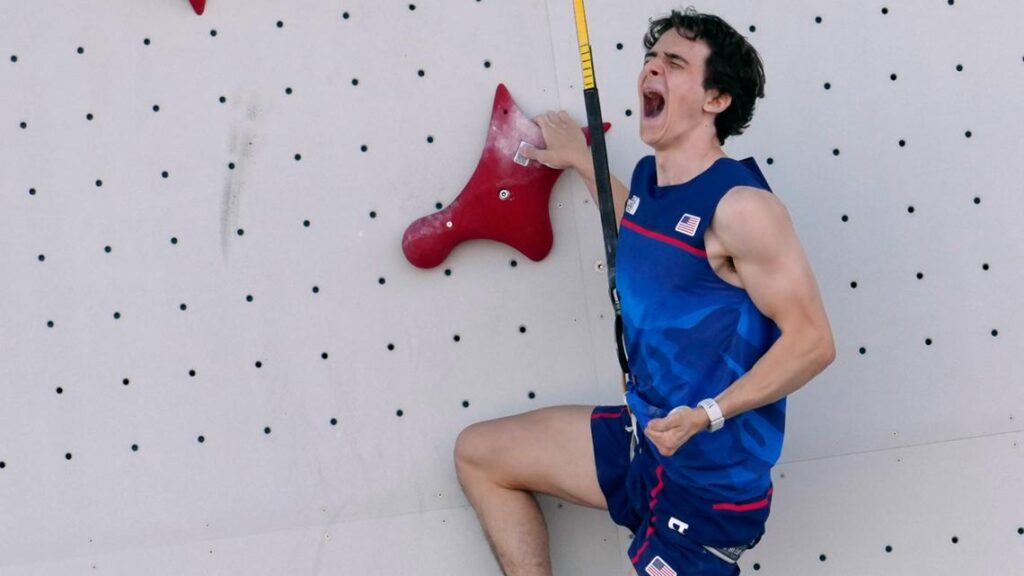Have you ever wondered what happens when three completely different climbing styles are blended into one breathtaking Olympic event? Sport climbing combined at the Olympics answered that question in the most exciting way. It brought together speed, bouldering, and lead climbing into a single competition, testing athletes’ versatility, strength, and mental toughness. In this article, we’ll dive into the story behind the Sport Climbing Combined Olympics format, its unique challenges, and why it captivated fans around the world.
The Birth of Sport Climbing on the Olympic Stage
When the International Olympic Committee (IOC) announced that sport climbing would debut at the Tokyo 2020 Olympics, the climbing community was buzzing with excitement. Climbing had been growing in popularity for years, but bringing it to the Olympics was a game-changer.
Sport Climbing Combined Olympics was chosen as the format for its first Olympic appearance. The decision wasn’t random—it was designed to showcase every major aspect of climbing in one event. Traditionally, speed, bouldering, and lead climbing are separate disciplines with their own specialists. But the Olympics demanded a single medal, so the organizers decided to combine all three. This meant that even the best climbers in one discipline had to step outside their comfort zones.
The idea was bold. It forced athletes to prove that they weren’t just specialists but true all-around climbers. For viewers unfamiliar with the sport, it offered an action-packed showcase of climbing’s variety.
Breaking Down the Three Disciplines
To truly appreciate Sport Climbing Combined Olympics, you need to understand each of its components.
Speed Climbing: The Sprint of the Vertical World
Speed climbing is exactly what it sounds like—a race up a standardized 15-meter wall. Every hold is fixed in the same position worldwide, so athletes can memorize every move. The fastest climbers reach the top in under six seconds, which is jaw-dropping to watch. Speed tests explosive power and precision. For many traditional climbers, it was the most foreign and intimidating part of the combined event.
Bouldering: The Puzzle of Power and Technique
Bouldering challenges climbers with short, powerful routes called “problems.” These routes are set on lower walls with thick pads beneath, so climbers don’t use ropes. Success requires strength, balance, creativity, and quick thinking. In the Olympics, competitors faced four boulder problems and had only a few minutes to solve each one. Bouldering isn’t just physical—it’s a mental puzzle under extreme pressure.
Lead Climbing: The Test of Endurance and Focus
Lead climbing is the final test. Athletes climb a tall wall with a rope, clipping into protection points as they ascend. They have one attempt to get as high as possible within a time limit. Lead climbing rewards endurance, technique, and calm under pressure. A small mistake or misread move can cost valuable points.
The Unique Challenge of the Combined Format
The combined format created a fascinating strategic game. Since the final rankings are calculated by multiplying the rankings from all three disciplines, consistency mattered more than domination. For example, finishing first in speed but last in bouldering and lead would give a much worse score than finishing second in all three.
This scoring method encouraged climbers to become well-rounded athletes. Specialists in bouldering or lead had to practice speed intensely, while speed climbers spent months improving their technical skills on boulders and lead routes. Watching these athletes step out of their comfort zones became part of the excitement for fans.
Memorable Moments from Tokyo 2020
The Tokyo Olympics delivered unforgettable climbing moments. Fans watched climbers like Alberto Ginés López, who shocked the world by winning the men’s gold. He wasn’t the favorite, but his consistency across disciplines paid off. In the women’s event, Slovenia’s Janja Garnbret dominated with incredible performances in bouldering and lead, proving why she’s considered one of the greatest climbers ever.
Another highlight was the camaraderie among athletes. Unlike some sports, climbing has a strong culture of mutual support. Competitors were seen cheering for each other, sharing beta (route tips), and celebrating big moves. This spirit of community made the event feel warm and inclusive, even amid fierce competition.

Why Fans Fell in Love with Sport Climbing Combined
Part of the magic of sport climbing combined is how accessible and exciting it is for new audiences. The variety keeps viewers engaged—speed climbing is a quick adrenaline rush, bouldering feels like a dramatic puzzle, and lead climbing builds suspense as climbers inch higher.
The event also highlighted the mental side of climbing. It’s not just about physical power; it’s about problem-solving, composure under pressure, and adapting to new challenges. This depth resonated with fans who appreciate sports that test both body and mind.
Moreover, the visual spectacle of climbing—the brightly colored holds, the athletic movements, and the climbers’ emotions—made it a perfect fit for television. Even those who had never set foot in a climbing gym could feel the tension and excitement.
Training for the Impossible: How Athletes Prepared
Preparing for the combined format was no small task. Climbers had to restructure their training to balance three very different skill sets. Speed climbing required sprint-like explosive strength and memorization drills. Bouldering demanded powerful core workouts, fingerboard sessions, and problem-solving practice. Lead climbing involved long endurance routes, pacing strategies, and mental rehearsal.
Many athletes admitted that balancing the three disciplines was the hardest part. Training for speed could make them lose endurance for lead, while focusing on bouldering might leave them rusty in speed. Coaches designed innovative training schedules to keep athletes sharp across the board.
The Road Ahead: Paris 2024 and Beyond
The Tokyo 2020 format was a trial run, and for Paris 2024, the organizers adjusted the structure. Speed climbing became its own medal event, while bouldering and lead were combined into a separate competition. This change allows specialists to shine while still celebrating versatility.
However, the Tokyo format remains a historic moment—it forced climbers to stretch their limits and gave viewers a comprehensive taste of the sport. Many fans still appreciate the unique drama of the all-in-one challenge.
Looking further ahead, sport climbing’s Olympic future seems bright. With climbing gyms booming worldwide and outdoor climbing gaining popularity, the sport has secured a place in the global spotlight. Young climbers are training earlier and harder, dreaming of Olympic medals.
How the Combined Format Influenced the Climbing Community
Beyond the Olympics, the combined format had a lasting impact on climbing culture. It encouraged more cross-training among climbers. Many boulderers now experiment with speed walls, and lead climbers test their skills on boulders. Gyms have even adjusted their setups to help climbers practice all three disciplines.
The event also inspired casual climbers. Watching Olympians struggle on problems or pump out on lead routes reminded everyone that climbing is about perseverance, not perfection. It made the sport feel approachable, even for beginners.
The Spirit of Climbing: More Than Just a Competition
What sets sport climbing apart is its community-driven nature. Even on the biggest stage, climbers showed humility and sportsmanship. They celebrated each other’s successes and shared in the collective joy of the sport’s Olympic debut.
That spirit mirrors the outdoor climbing culture, where climbers often work together to solve routes and cheer for their peers. The Olympics amplified this ethos, showing the world that competition doesn’t have to mean hostility.
A New Era for Climbing Sports
Sport Climbing Combined Olympics at the Olympics wasn’t just a one-time experiment—it was the start of a new chapter. It proved that climbing could captivate a global audience and belong on the biggest stage in sports. The format’s unique challenges, memorable performances, and emotional moments made it one of Tokyo 2020’s standout events.
As we look toward future Games, the lessons learned from the combined format will shape how the sport grows. Whether you’re a die-hard climber or a curious newcomer, one thing is clear: the Olympic debut showed that climbing is about more than reaching the top—it’s about creativity, resilience, and passion.
Final Thoughts: Why Sport Climbing Combined Left a Lasting Mark
So, what made Sport Climbing Combined Olympics so special? It wasn’t just the walls or the medals—it was the story of athletes pushing themselves beyond their limits. It was the shared moments of triumph and heartbreak. And it was the realization that climbing is as much about mental strength and camaraderie as it is about physical ability.
The Tokyo 2020 format may not return exactly as we saw it, but its impact will be felt for years. It introduced millions to the thrill of climbing and reminded seasoned climbers why they fell in love with the sport.
As climbing continues to evolve in the Olympics and beyond, Sport Climbing Combined Olympics will remain a shining example of innovation and adventure. Whether you’re watching from the stands or gripping a chalk-covered hold in your local gym, you’re now part of a movement that has truly reached new heights.


